Following the Siberia series geographically, it is now a little further north and after the frost-event of clattering ice nights, Steelseries is looking for the new acoustic pole with the Arctis series, for which the customer should like to warm up.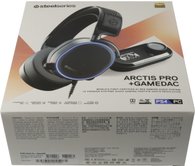
Lots of audio or even audiophile? That's exactly what we want to test today, because the street price for the headset, including the DAC and amplifier, is a confident 275 euros. However, you can get the headset individually for less than 200 euros, so you have the choice of your own components.
In the end, therefore, it will come from testing the acoustic capabilities on the one hand and, on the other hand, evaluating the material appearance, processing and functionality in order to objectively question the price called. You can spend so much money, but you should be able to expect a corresponding value.
Scope of delivery and accessories
Actually, Steelseries has packed almost everything into the small accessory box, which you could even somehow connect. In addition to the headset and GameDAC, there is a proprietary cable for the combined audio connection including RGB LED illumination, an optical cable (SPDIF), a USB connection cable for PC or PS4, and an analog 3.5 mm jack cable for the connection between GameDAC and mobile device.

Despite the high price, unfortunately, a normal 3.5 mm jack cable is missing in order to be able to operate the headset even without the GameDAC. After all, who is dragging a little briquette in their pockets on the way? Steelseries should simply follow suit here, as it would significantly increase usability.
What is "Hi-Res Audio"?
 First of all, it is not HRA (High Resolution Audio), but the similarity has certainly not been chosen unintentionally. The JAS (Japan Audio Society) as the lead organization behind the label used by Sony for the first time years ago on its own record player writes e.g. for analog devices, that a "speaker and headphone performance of 40 kHz or above" can be achieved in the case of headphones (which is what is at stake). This label is not "awarded" either, but you have to pay for it in the first place.
First of all, it is not HRA (High Resolution Audio), but the similarity has certainly not been chosen unintentionally. The JAS (Japan Audio Society) as the lead organization behind the label used by Sony for the first time years ago on its own record player writes e.g. for analog devices, that a "speaker and headphone performance of 40 kHz or above" can be achieved in the case of headphones (which is what is at stake). This label is not "awarded" either, but you have to pay for it in the first place.
HiRes Audio is also an undefined term for the digital processing process. The target is already reached if the sampling rate of the audio signal and the resolution are defined greater than in the usual H-Fi range. The sampling rate of the GameDAC is 96 KHz higher than the usual 48 KHz and also the resolution is 24 bits higher than the normal 16 bits. However, a higher resolution is more for the studio and the signal processing path there. However, the test must prove whether this is audible for the customer at all.
In addition, the JAS also says nothing about the actual playback quality of the headset and the required parameters. What sounds really good in the end, every company can decide for itself: "Listening evaluation process is added and final decision as Hi-Res Audio product to be proved according to each company's sound evaluation standard". But, of course, as always, we will listen to ourselves, measure and judge objectively. Even though Steelseries thinks it has created the first such certified headset – with the Roccat Khan Pro there are significantly cheaper alternatives with the same label and not only since yesterday.
Optics, haptics and functionality
The material appearance of the headset, which at first glance is rather solid and restrained, is good, but also does not tear you off the stool euphorically. At least not at first sight. Any colour accents must then be directed by the LED ring at the outer edge of the earcups. If you connect the headset only analogously, this splash of color is missing. But if you see the headset more as a utility item, you'll be able to do so.
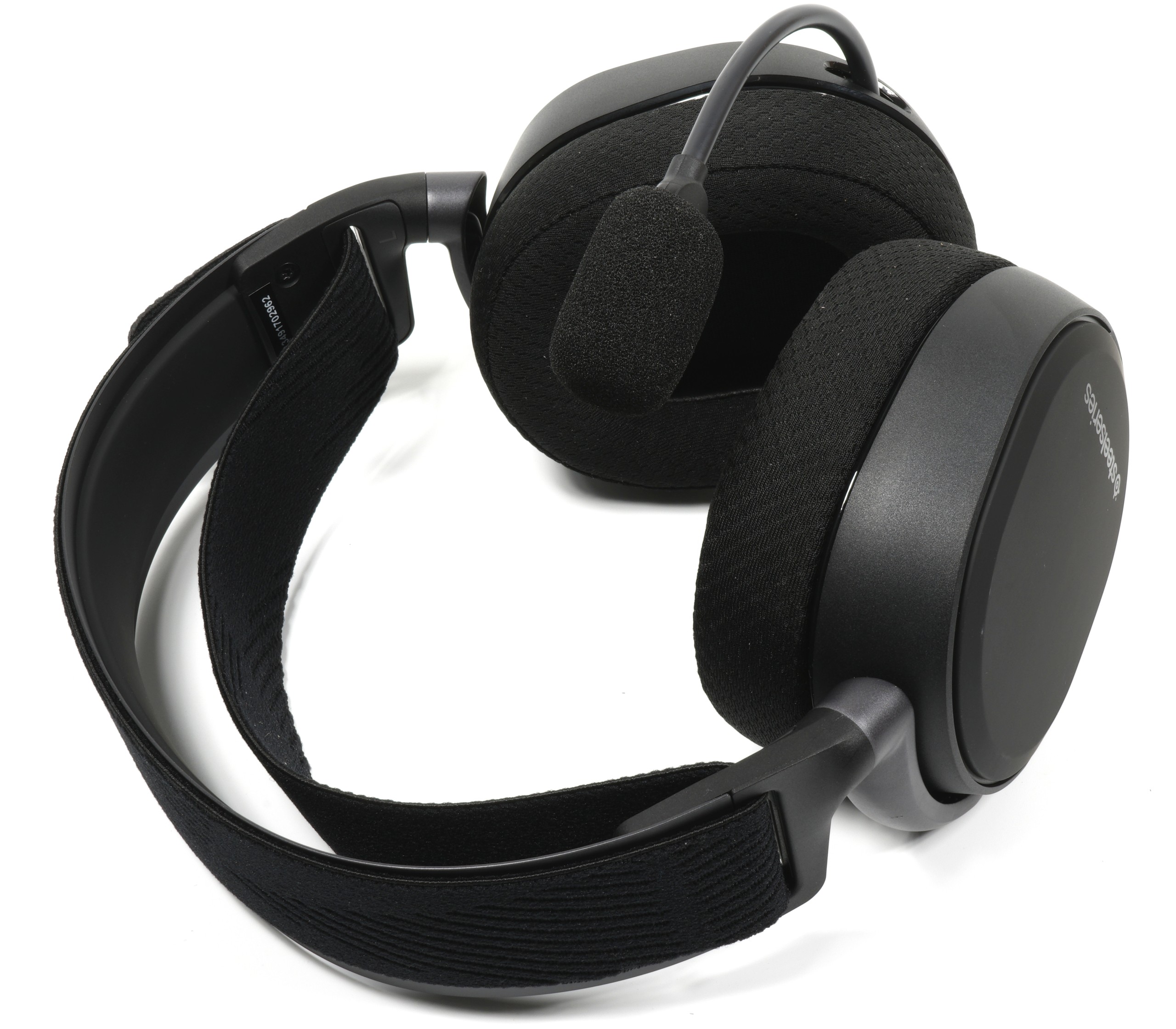 |
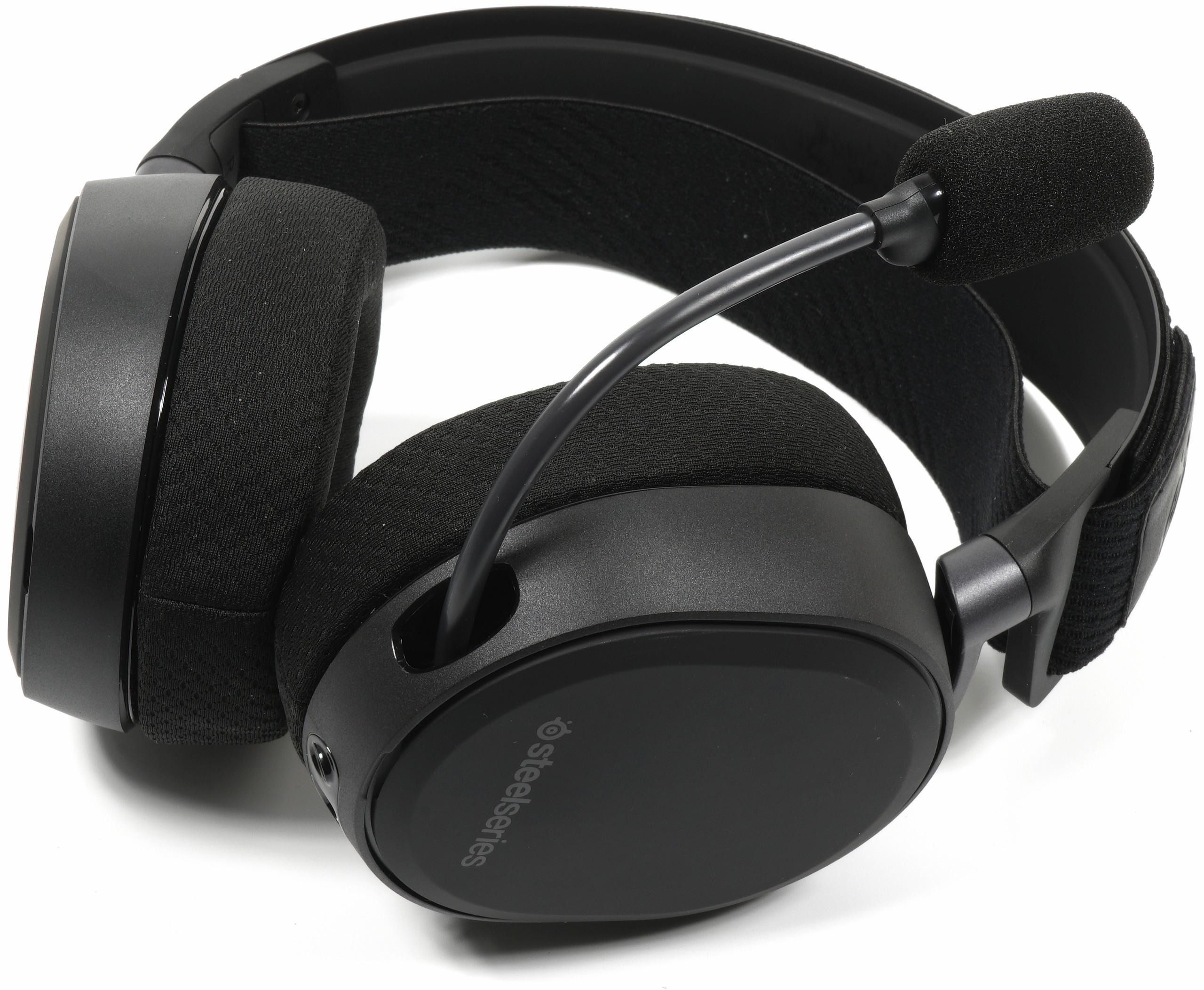 |
Combined surfaces made of matt black ABS (body), rubber coating (outer shells) and anthracite-metallic hinges do not catch the eye, but at least at second glance they look quite classy. Metal can be found except for the outer headband then none.
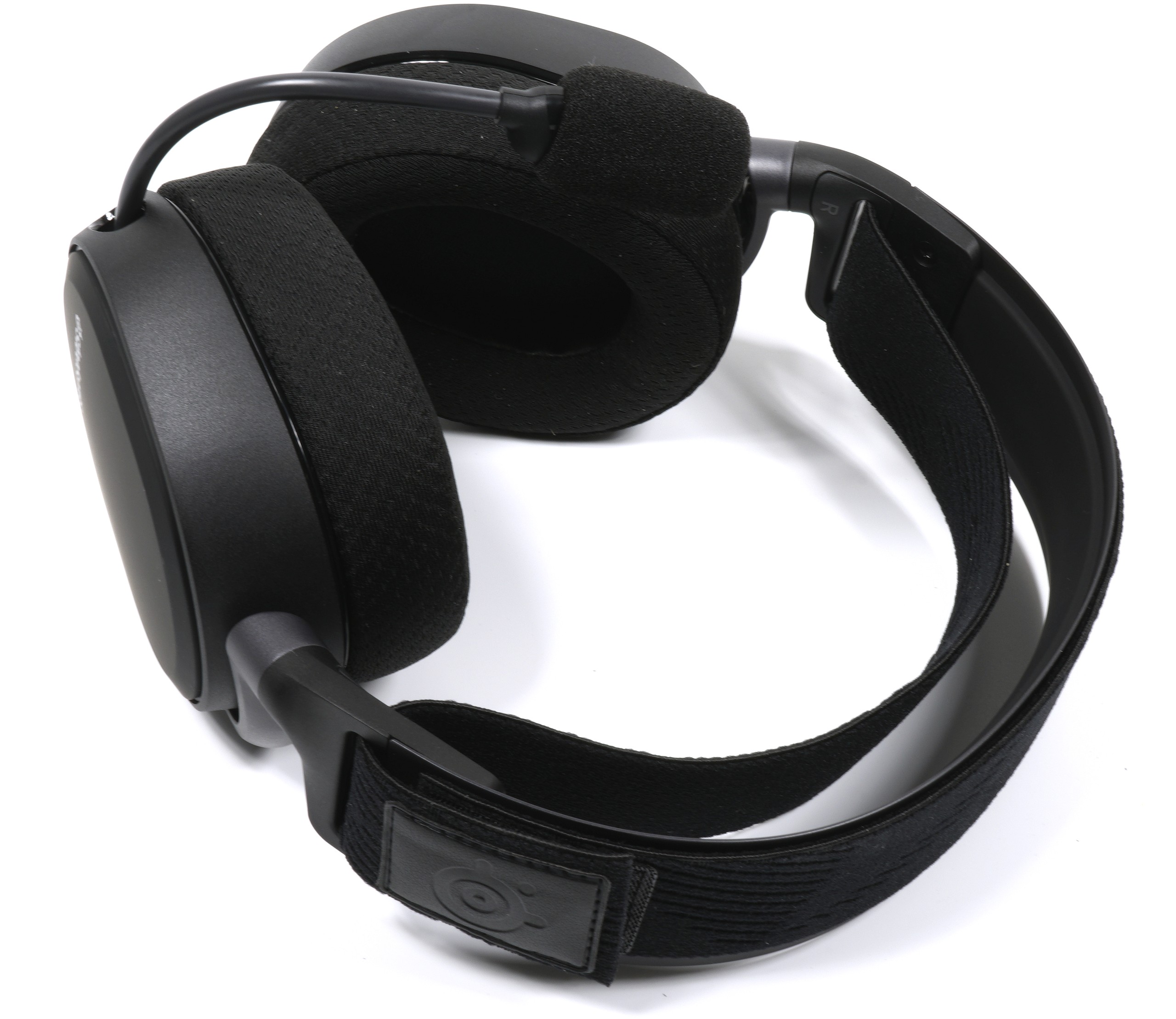 |
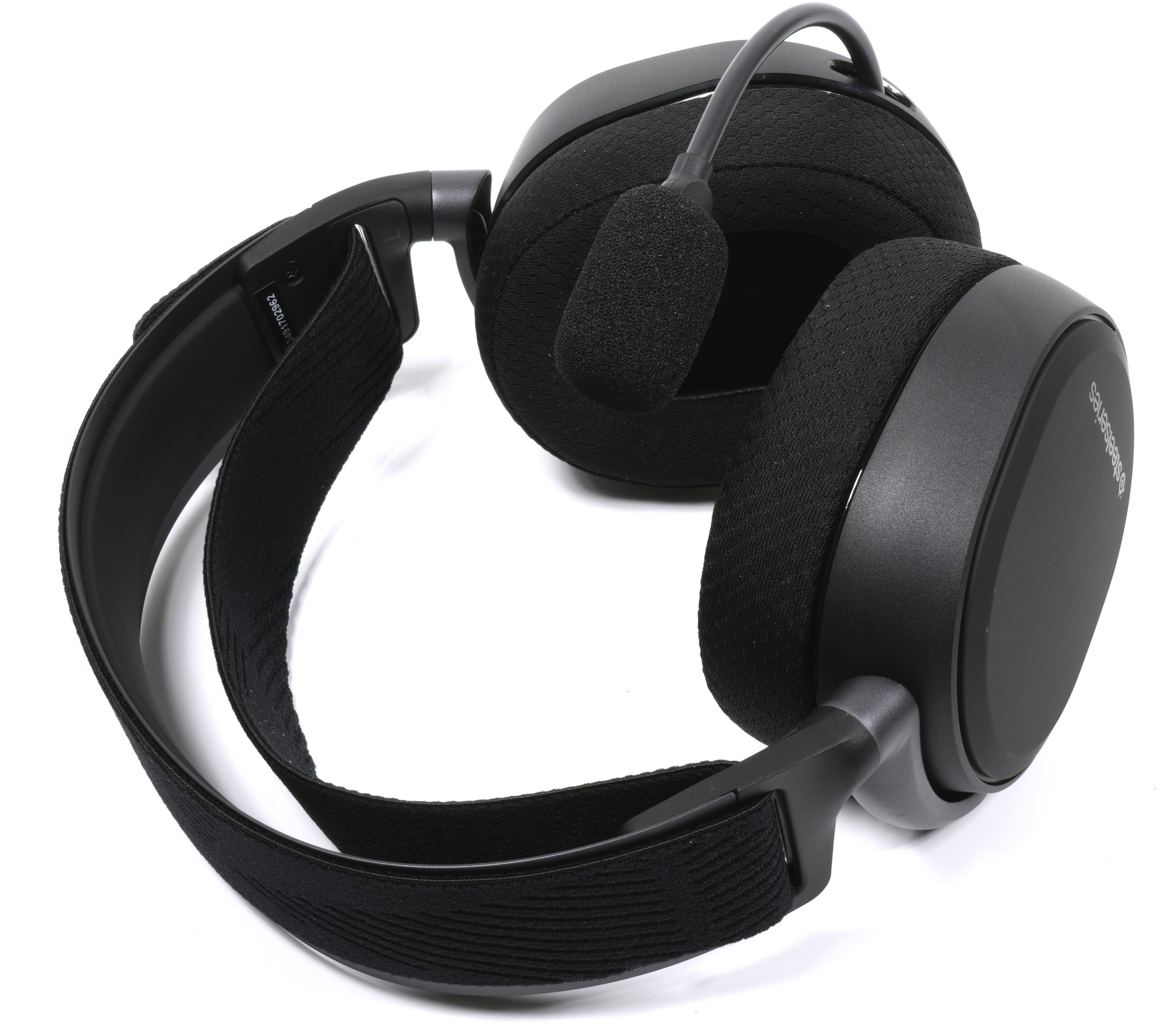 |
The headband is not adjustable as such, but Steelseries relies on another, completely spanning textile strap, which can be individually adapted to the head size by means of Velcro fasteners. At least that is the way it is, but it fails relatively quickly with European minds. The author with hat size 62 would not be an ideal member of the paying target group, even with a lot of goodwill. It is a pity, because here Asian body measure is very clearly at the limits of globalization and is impossibly unsuitable as a blueprint.
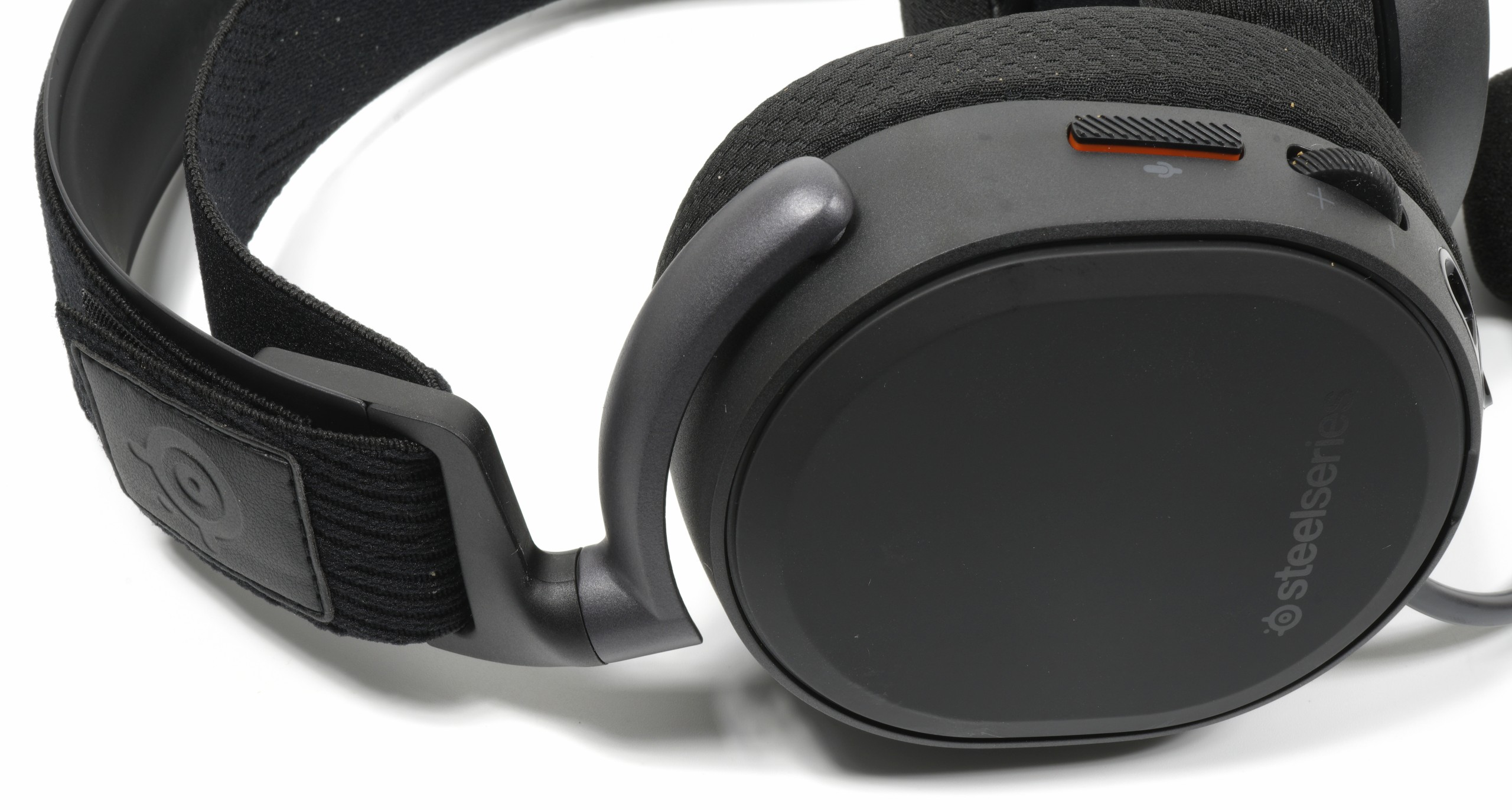
The two-axis joint mechanism must also make the rather flexible headband to remain adaptable in all directions. In practice, this also works quite well, if it were not for the limitation of the head sizes. Especially since a headset that does not sit optimally quickly becomes a Waterloo and the manufacturer thus leaves important points.
On the side of the left earcup are the easily sapreg, large-area mute switch for the microphone, the grippy rotary wheel for the analog volume control, which is actually not needed at the GameDAC, the slightly too filigree connection of the connecting cable to the amplifier, as well as the remaining 3.5 mm jack, for which a combination cable is needed (audio and microphone).

The ear pads are relatively easy to removable and can also be re-used. The textile covering is comfortable and also largely sweat-free, but is not completely harmless acoustically. Apart from the slightly worse shielding of the ambient sounds, the ear pads strongly influence the subjective sound experience. Especially at higher frequencies, the location suffers somewhat, but more later on.
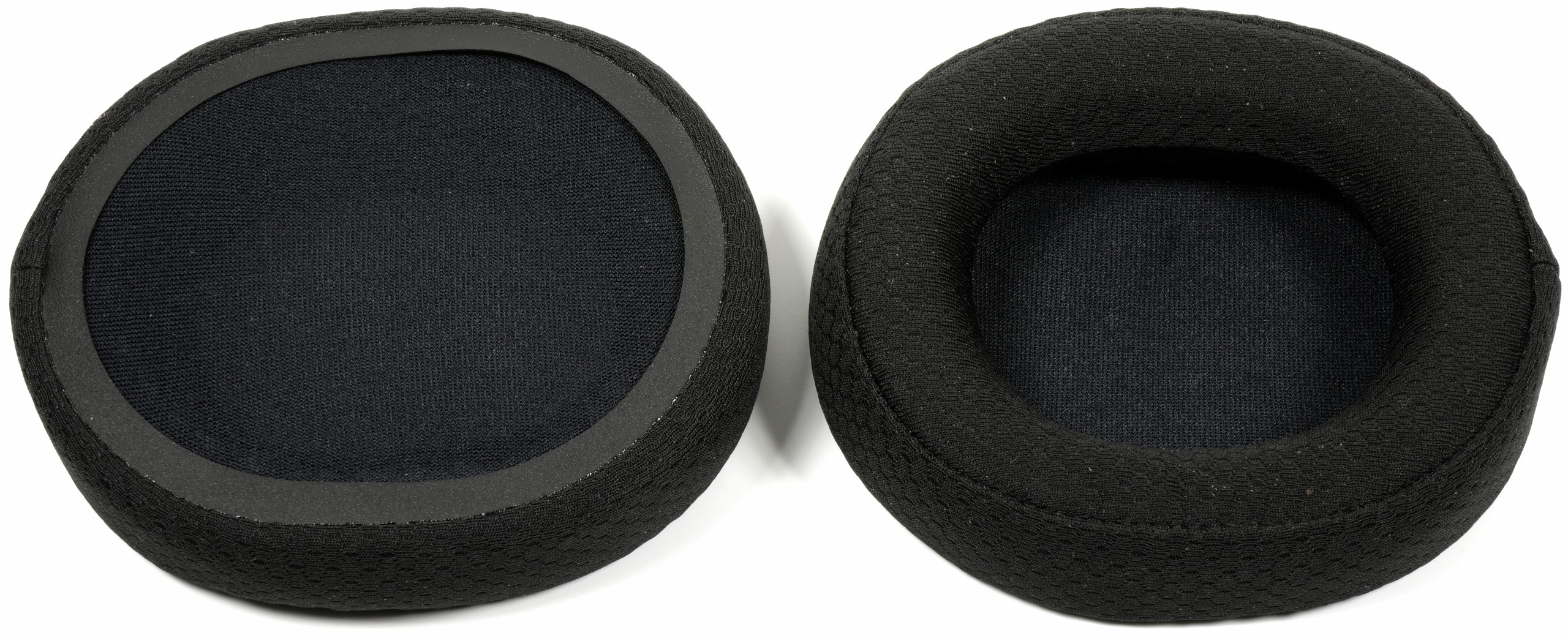
Tear down and sound design
Steelseries also relies on smaller and nimble 40mm neodymium drivers to achieve the 40 KHz limit for frequency range. In principle, this is not detrimental as long as the tuning in the body does not neglect the lower frequency ranges. And that's why we're screwing up the part now, because we're curious.
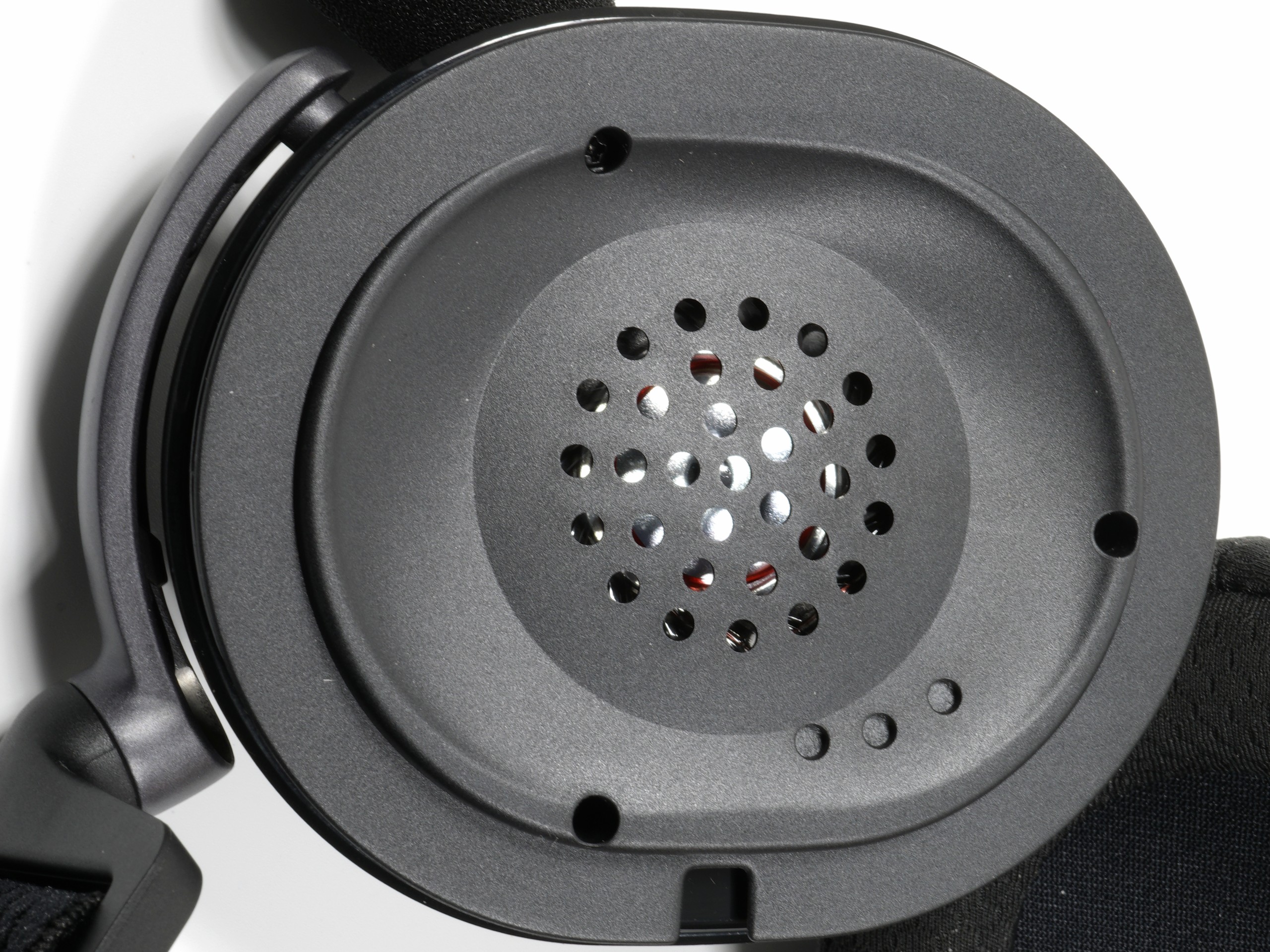
The supplier of the Arctis Pro steelseries also relies on a kind of double chamber with side-variable openings for customer-specific factory tuning. A test-by-test, complete opening yielded a little more fullness in the bass, but then its clean and clear definition was lost and there was a rather spongy rumbling as a free allowance. Better then, as it is now.
We see inside a simple board by Shen Zhen Sun & Lynn Circuits Co. Ltd., the soldering quality is ok throughout the headset. You can also see very nicely the supply line to the milky light transfer film in the middle, behind which hide the RGB LED.
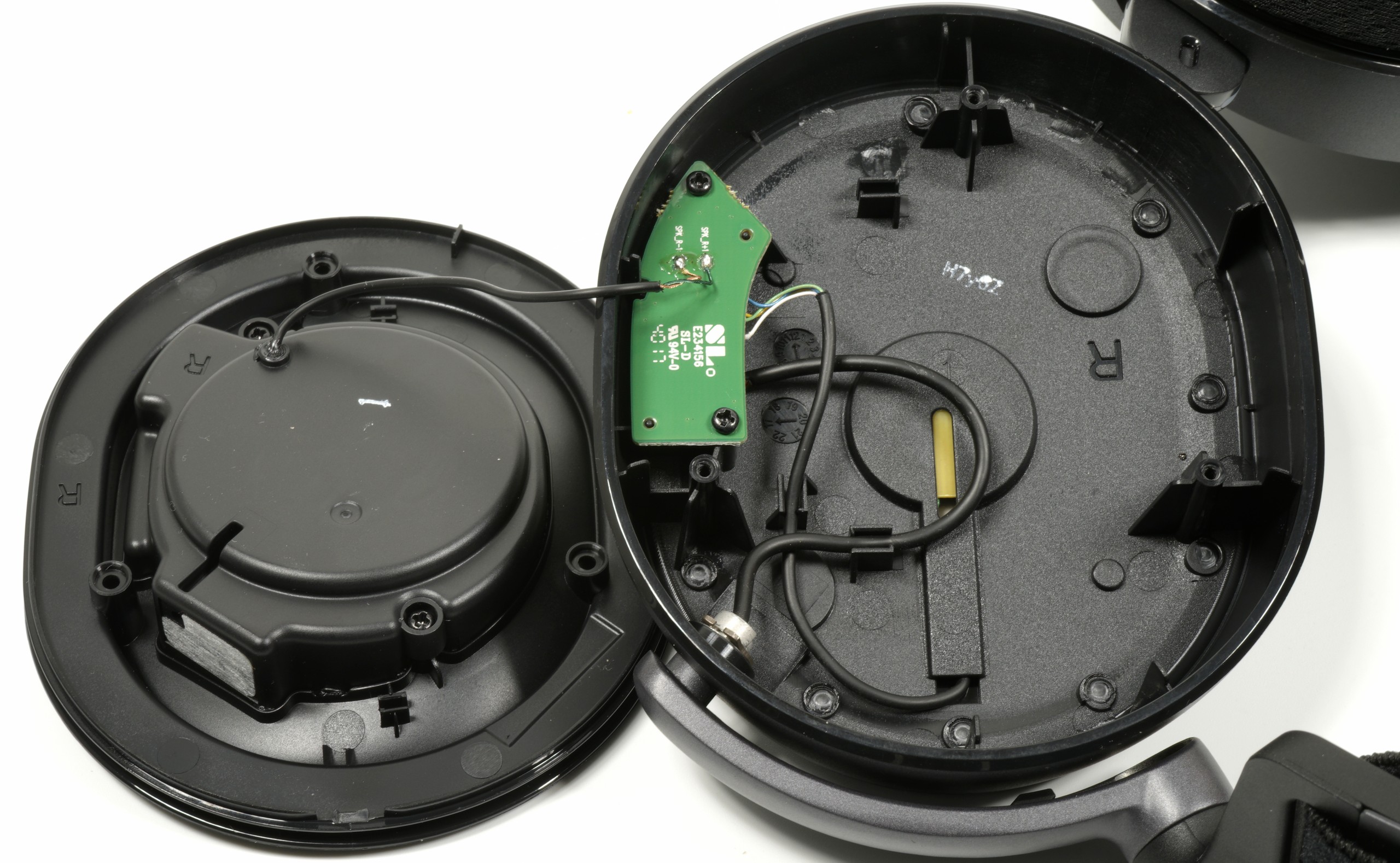
GameDAC – Digital-to-analog converter and headphone amplifier
What Steelseries packs into the GameDAC with the ESS Sabre 9018 is currently hard to beat, because the market for good DACs is relatively manageable. If you also take into account that at the end of the day, approx. 75 Euros for the GameDAC more than for the headset without, then the price for the GameDAC is actually only fair. Unfortunately, it only offers a proprietary headset output and you can't draw a direct comparison to other headsets.
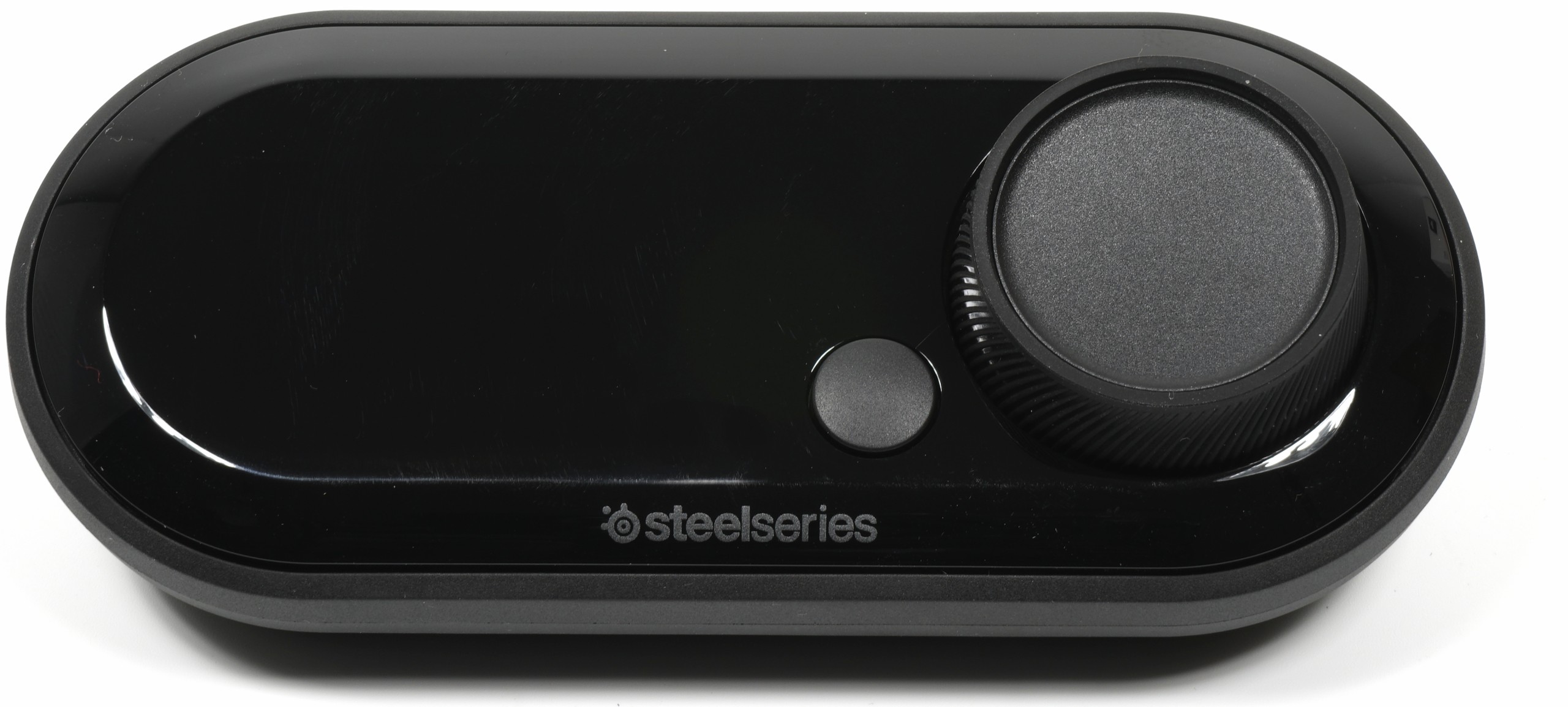
After all, the GameDAC allows to be connected not only to an optical input but also to the PC or the PS4 directly via USB, whereby this connection is also used for power supply. Toslink & Co. only with an additionally connected large device. However, we were also able to use a power bank to keep the device portable. But none of this is really space-saving.
However, you should avoid connecting to an unknown USB charger, because the ESS Sabre 9018 is actually very sensitive to voltage differences. Unfortunately, it was not possible to determine to what extent this was pre-built in the GameDAC.
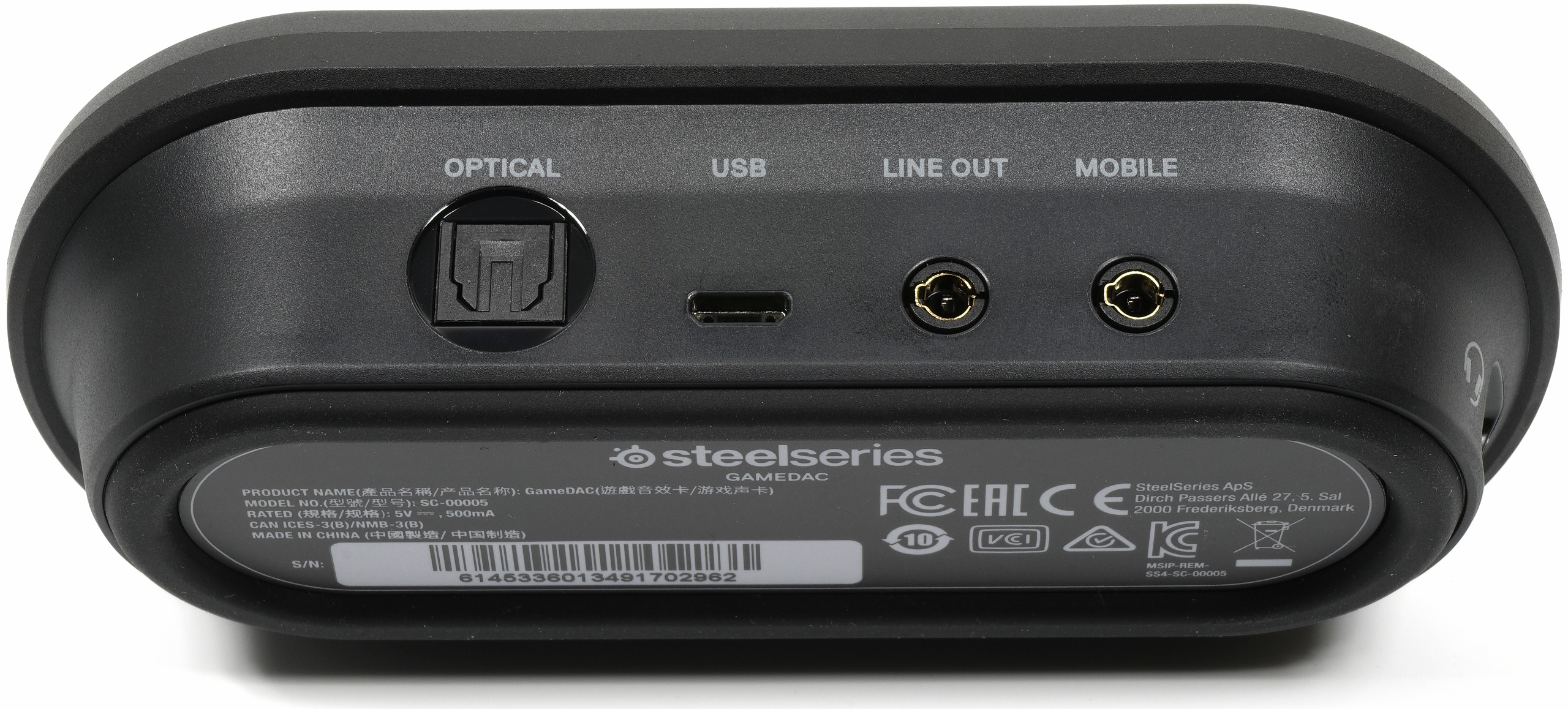
Even if the ESS chip could do much more, the 96 KHz sampling rate and 24 bit resolution in the current implementation are definitely enough. A small drop of wormwood is the capping of the maximum volume that is now found in many amplifiers. Even if this is used to comply with certain regulations or Recommendations, it's not nice. All of this, of course, saves Kevin-Olaf elegantly from the hearing loss, but gait remains gait. The 102 dB SPL specified for the drivers is not even nearly reached.
The functionality of the firmware, on the other hand, is above average. In addition to a lot of settings that can be made intuitively with the rotary switch and the button via the display, the mixer function is also very practical by skillfully adjusting the volume levels of chat and game to the desired. The same applies to the microphone. With the Steelseries Engine, these settings can also be conveniently made from the PC, including RGB control.
Microphone
Steelseries uses aging-charateristics to use a rather unusual microphone solution, because usually kidney or spherical characteristics are preferred. However, the recognizability is quite neat, only the ambient noises directly in front of you also come out quite clearly. The gooseneck is sufficiently long and also very flexible.

The whole thing can also be pushed in when not in use, but then the plug-in pop protection falls off. In the absence of a carrying bag, the part is then inconclusive lynotand will have to find a safe place to find it later.

































Kommentieren